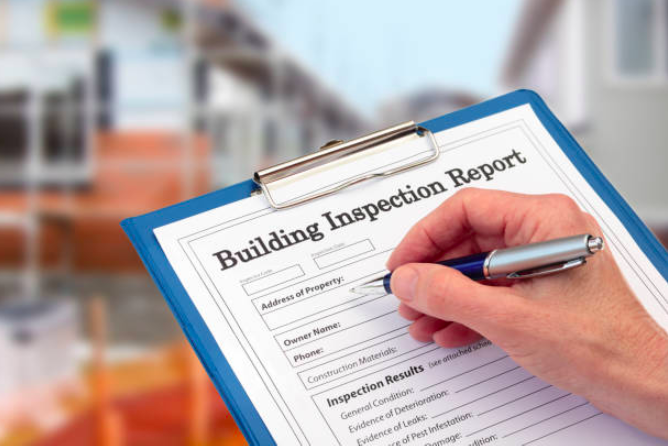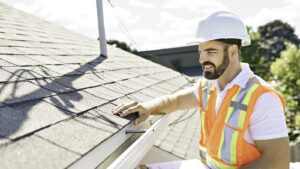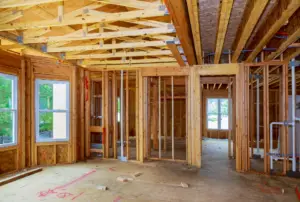1. Introduction: Importance of Building and Pest Inspections
When purchasing or selling a property, conducting a thorough building and pest inspection is a critical step that should not be overlooked. These inspections provide potential buyers with a comprehensive assessment of the property’s condition, identifying any existing or potential issues that may impact the building’s safety, structural integrity, or livability. Additionally, these inspections can help sellers identify and rectify problems before putting the property on the market, ensuring a smooth and transparent transaction for all parties involved. This article will delve into the key aspects of building and pest inspections, exploring what to expect during the process and the significance of each step. By understanding the importance of these inspections, you can make informed decisions and safeguard your investment in real estate.

Building and pest inspections are like getting a thorough health check-up for your property. Just like you wouldn’t want to ignore a mysterious ache or a strange rash on your body, it’s equally important not to turn a blind eye to potential issues in your home or building. These inspections are designed to identify any structural or pest-related problems lurking beneath the surface, giving you the peace of mind and the opportunity to address them before they become major headaches. So, let’s dive into what you can expect during a building and pest inspection and why they should be a part of your property maintenance routine.
2. Preparing for the Inspection: What to Do Beforehand
2.1. Notify the Occupants and Make Necessary Arrangements
Before the inspection day arrives, informing the occupants of the property about the upcoming inspection is essential. This way, they can make arrangements to be present or ensure someone is available to provide access. And no, hiding in the closet, hoping the inspector won’t notice you, isn’t a valid plan.
2.2. Gather Relevant Documents and Information
Be prepared to gather and provide any relevant documents and information that may assist the inspector during their evaluation. This includes architectural plans, previous inspection reports, permits, and any other documentation related to renovations or repairs that have been done. It’s like presenting your property’s resume so the inspector can have all the necessary background information.
2.3. Clear Access to All Areas of the Property
Remember those scenes in action movies where the protagonist has to dodge lasers and maneuver through intricate obstacles to reach their goal? Yeah, let’s not replicate that during the inspection. Clear any clutter, move furniture if necessary, and ensure easy access to all areas of the property. You don’t want the inspector to trip over your kid’s toy car and inspect the floor through a new hole in the wall.
3. Structural Inspection: Assessing the Building’s Foundation and Framework
3.1. Checking the Foundation for Cracks or Settlement
No, we’re not discussing whether your building has joined a cult. Inspectors will carefully assess the foundation for any cracks, signs of settlement, or other structural abnormalities that could compromise the stability of the entire structure. It’s like giving your building a stability test to ensure it won’t faint when faced with a strong wind.
3.2. Evaluating the Condition of Load-Bearing Walls and Beams
Load-bearing walls and beams are like the silent heroes of your building, supporting the weight and ensuring everything stays up where it should be. Inspectors will examine these critical components to identify any signs of damage, decay, or improper construction. It’s like checking if your building’s backbone is sturdy enough to handle the weight of responsibilities.
3.3. Inspecting the Roof for Leaks, Damage, or Poor Maintenance
The roof is like the ultimate guardian, protecting your property from rain, sun, and all Mother Nature throws. The roof will receive its fair share of attention during the inspection, with inspectors looking for leaks, damage, or signs of poor maintenance. After all, no one wants to live under a holier roof than a slice of Swiss cheese.
4. Pest Inspection: Identifying and Evaluating Potential Infestations
4.1. Looking for Signs of Termites and Other Wood-Destroying Insects
Termites may be tiny, but they have insatiable appetites for wooden things. During the pest inspection, inspectors will look for any signs of these destructive critters and other wood-destroying insects. It’s like playing detective, hunting for clues that could reveal unwanted guests dying to munch on your building’s structural integrity.
4.2. Examining for Signs of Rodent or Insect Infestations
Rodents and insects aren’t ideal housemates. Inspectors will carefully search for any indications of rodent or insect infestations, such as droppings, chewed wires, or suspicious trails. It’s like going on a scavenger hunt, except you’re hoping not to find anything.
4.3. Assessing the Risk of Pest-related Damage and Health Hazards
Pests aren’t just annoying; they can pose health risks and cause significant damage. Inspectors will evaluate the severity of any infestations found and assess the potential risks to both the property and its inhabitants. It’s like evaluating the threat level of a villain in a superhero movie, except the superheroes here are pest control professionals.
So, there you have it—the checklist of what to expect during a building and pest inspection. Remember, these inspections are not meant to scare you but to empower you with knowledge about your property’s condition. With this information, you can make informed decisions, take necessary actions, and maybe even sleep better at night knowing that your building is in good shape—minus the capes and superpowers.
5. Electrical and Plumbing Systems: Checking for Safety and Functionality
5.1. Inspecting the Electrical Panel, Wiring, and Outlets
Safety is a top priority when it comes to the electrical system of a building. During a building and pest inspection, the electrical panel, wiring, and outlets will be thoroughly inspected to ensure everything is up to code and in proper working condition. This includes checking for loose or exposed wiring, outdated electrical panels, and faulty outlets. After all, no one wants to be left in the dark or risk electrical hazards.
5.2. Assessing the Plumbing System for Leaks, Corrosion, or Blockages
A plumbing system is like the unsung hero of a building. It’s silently working behind the scenes to keep things running smoothly. During an inspection, the plumbing system will be assessed for leaks, corrosion, or blockages that could lead to costly repairs. From checking pipes for signs of wear and tear to ensuring proper drainage, the goal is to ensure everything flows just as it should.
5.3. Checking the Functionality of Fixtures, Appliances, and Drainage
You know what they say, “If it ain’t broke, don’t fix it.” During a building and pest inspection, it’s about ensuring things are working as they should be. This includes testing fixtures like faucets and toilets, checking the functionality of appliances, and assessing the drainage system. No one wants to deal with a leaky faucet or a dishwasher that can’t clean a dish to save its life.
6. Interior Inspection: Assessing the Condition of Rooms, Fixtures, and Appliances
6.1. Evaluating the Overall Condition and Maintenance of Interior Spaces
We want to feel cozy, comfortable, and at ease when entering a building. The interior inspection focuses on evaluating the overall condition and maintenance of the rooms. This includes examining the walls, ceilings, and flooring for any signs of damage, such as cracks or water stains. It’s also a time to assess the general cleanliness and tidiness of the space. After all, a happy home means happy inhabitants.
6.2. Checking the Quality and Safety of Flooring, Walls, and Ceilings
The quality and safety of the flooring, walls, and ceilings are integral to the overall integrity of a building. During the inspection, the condition of the flooring materials, such as carpets, tiles, or hardwood, will be assessed for wear and tear. The walls and ceilings will be examined for any cracks, bulges, or peeling paint. The goal is to ensure everything is stable and in tip-top shape so you can walk, sit, and dance without worry.
6.3. Inspecting Appliances, HVAC Systems, and Ventilation
Appliances and HVAC systems are the unsung heroes of modern living. From the trusty refrigerator to the blissful air conditioning unit, these things make our lives easier and more comfortable. These appliances and systems will be tested during an interior inspection to ensure they function properly. Ventilation systems will also be assessed to ensure adequate airflow and prevent unwanted odours or moisture buildup.
7. Exterior Inspection: Evaluating the Building’s Exterior, Roof, and Surrounding Areas
7.1. Assessing the Condition of Exterior Walls, Windows, and Roofs
The exterior of a building is its first line of defence against the elements. During an inspection, the condition of the exterior walls, windows, and roofs will be carefully evaluated. Any water damage, cracks, or structural issues will be noted. After all, a leaky roof or a crumbling wall is an eyesore and can lead to more serious problems if left unchecked.
7.2. Checking for Signs of Water Damage, Cracks, or Structural Issues
Water damage, cracks, and structural issues are red flags during a building inspection. These are the things that can cause major headaches down the line if not addressed. So, during an exterior inspection, the inspector will look for any signs of these potential problems. From inspecting the foundation to examining the gutters and downspouts, no stone will be left unturned because a solid exterior means a safe and sturdy building.
7.3. Evaluating the Landscape, Driveways, and Outdoor Structures
The exterior inspection isn’t just about the building and surrounding areas. The landscape, driveways, and outdoor structures will be evaluated to ensure they are free from hazards and in good condition. From checking for proper drainage to assessing the condition of fences and decks, the goal is to create a safe and welcoming outdoor space for you to enjoy.
8. Summary and Recommendations: Understanding the Inspection Report
8.1. Reviewing the Findings and Recommendations Provided by the Inspector
After the building and pest inspection, you will receive an inspection report outlining the findings and recommendations. It’s important to take the time to review this report thoroughly. It will provide you with valuable information about the condition of the property and any potential issues that need to be addressed. So, grab a cup of coffee, sit down, and get ready to dig into the nitty-gritty details.
8.2. Understanding the Importance of Addressing Potential Issues
Addressing potential issues discovered during a building and pest inspection is crucial for your safety, peace of mind, and future maintenance costs. Small problems can quickly escalate into big headaches if ignored. So, take action seriously. Whether it’s fixing a leaky faucet or addressing structural issues, tackling these concerns head-on will save you time, money, and countless headaches in the long run.
8.3. Seeking Professional Advice and Making Informed Decisions
If you’re unsure about any issues found during the inspection or need further guidance, don’t hesitate to seek professional advice. Building and pest inspectors are a wealth of knowledge and can provide valuable insights and recommendations. Use their expertise to help you make informed decisions about the property. After all, buying or selling a building is a big deal, and having the right information is key to making the best decisions for your situation.
In conclusion, a building and pest inspection is essential to any real estate transaction. It provides valuable information about the property’s condition, allowing buyers to make informed decisions and sellers to address any issues before listing their property. By thoroughly assessing the structure, pests, electrical and plumbing systems, interior and exterior, these inspections ensure the safety and functionality of the building. Whether buying or selling, investing in a professional building and pest inspection is a wise choice that can save you time, money, and potential headaches. So, don’t overlook this crucial step and prioritize the peace of mind that comes with a thorough inspection.

FAQs:
1. Why is a building and pest inspection necessary?
Getting a building inspector to assess a property for structural and safety issues is crucial in any real estate transaction. But why stop there? Adding a pest inspection to the mix can save you from costly pest-related headaches. The thought of creepy crawlies lurking in the shadows may give you goosebumps, but it’s better to face them head-on before you make a pricey investment. Building and pest inspection reviews are readily available online, making it easy to find trustworthy inspectors in your area. So don’t wait until it’s too late – call a building and pest inspector today and sleep easy knowing your dream home is bug-free.
2. Who should arrange and pay for the building and pest inspection?
If purchasing a property, you must opt for a pre-purchase building inspection. The detailed report you’ll receive from the inspection can provide information that could influence your decision to purchase the property. But who should arrange and pay for it? Typically, it’s the responsibility of the buyer to organize and pay for the inspection. However, if you’re a seller, offering to get a building and pest inspection done may put potential buyers at ease and help facilitate the sale. Ultimately, it’s important to remember that investing in a pre-purchase building inspection can save you a lot of time, money, and headaches. So, whether you’re a buyer or a seller, ensure this important step is taken care of!
3. How long does a building and pest inspection typically take?
Planning to buy a property is always an exciting milestone. But before making that final decision, conducting a pre-purchase building and pest inspection is essential to ensure you’re investing your money wisely. The inspection process typically takes around two to three hours, depending on the property size. Although it may seem long, it’s worth it as it can provide reliable service. You’ll gain insights into issues that may compromise the property’s structural integrity and other pest-related problems through the inspection process. So, add a building and pest inspection to your checklist, as it can give you peace of mind knowing that you’re making an informed decision.











